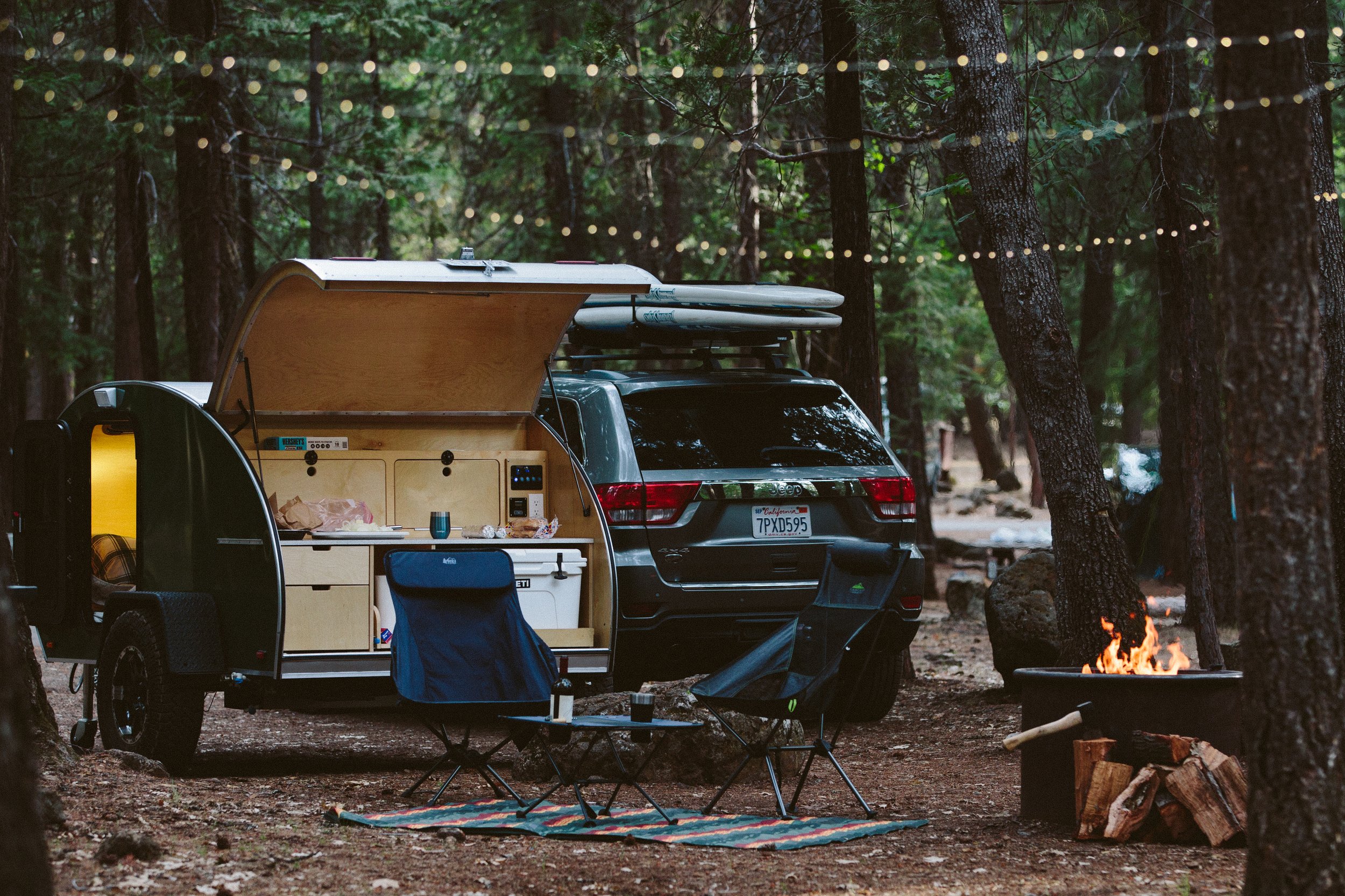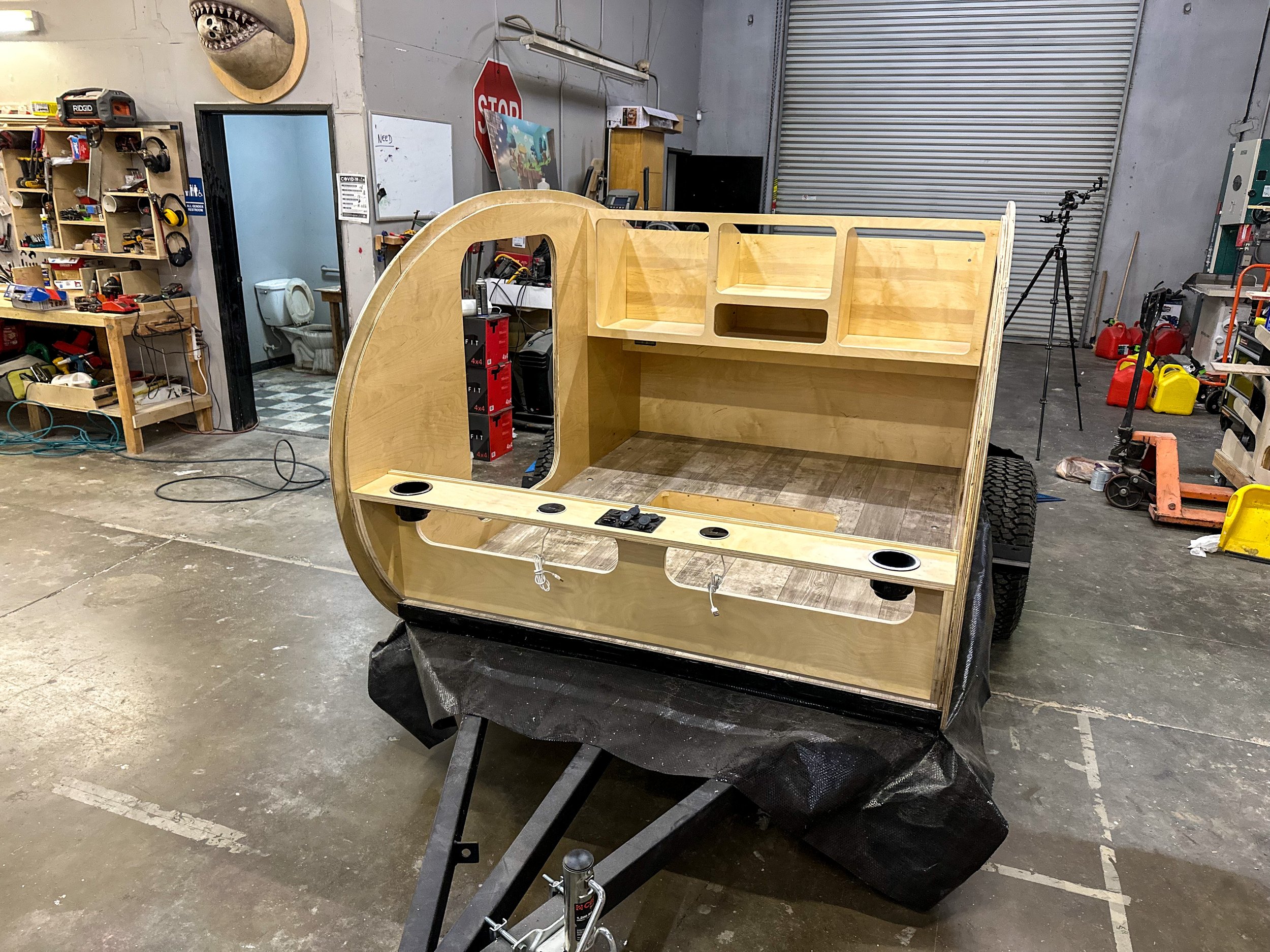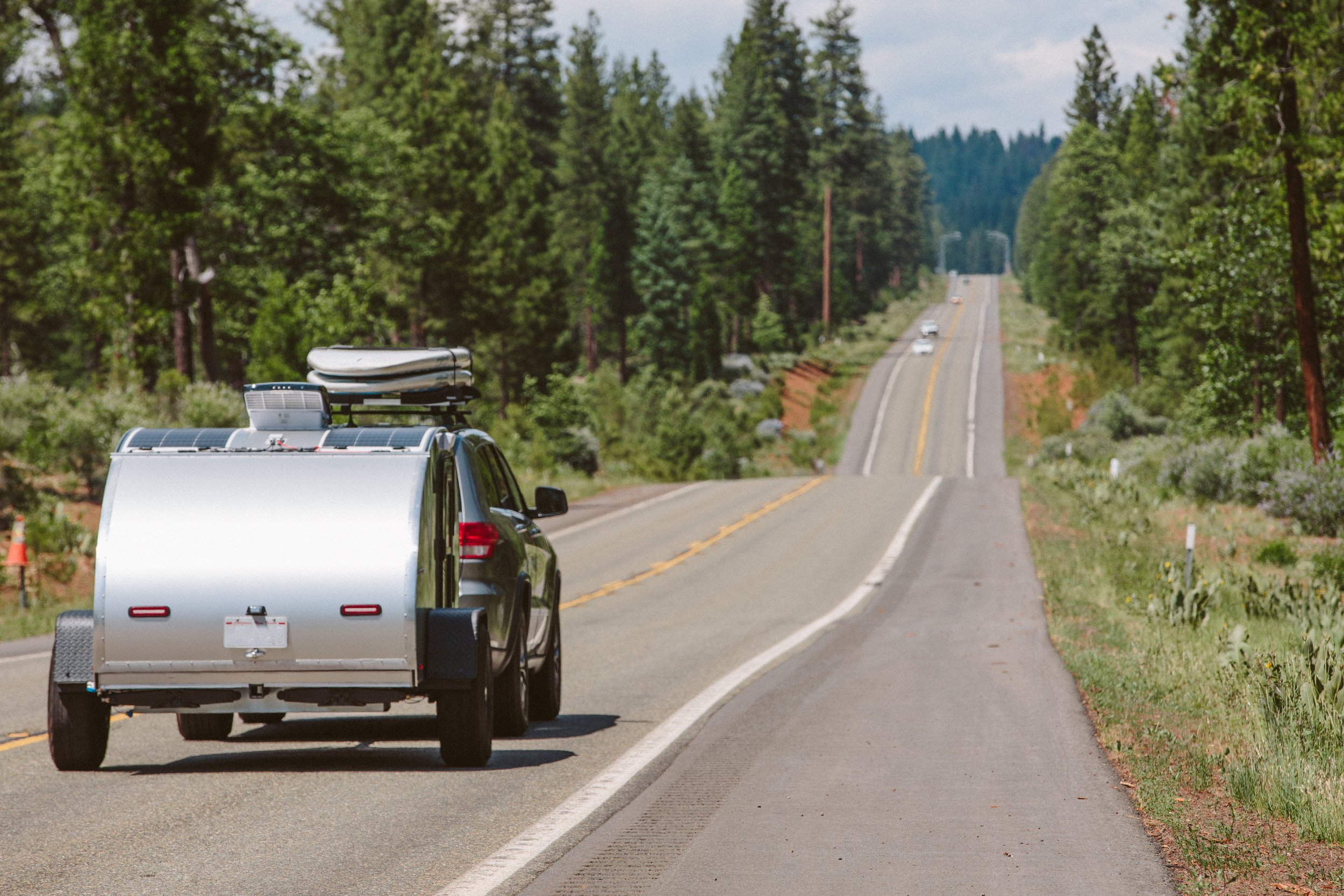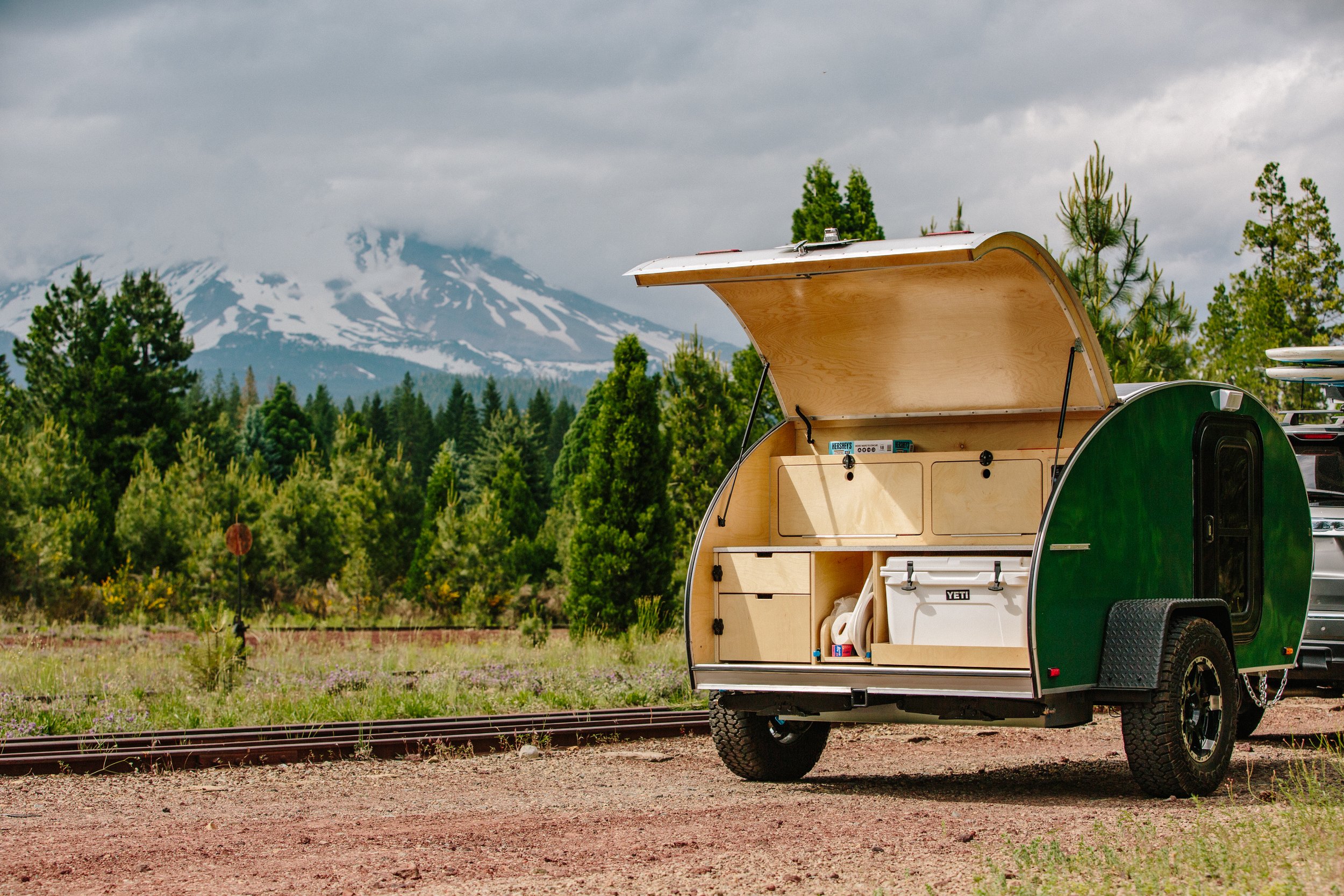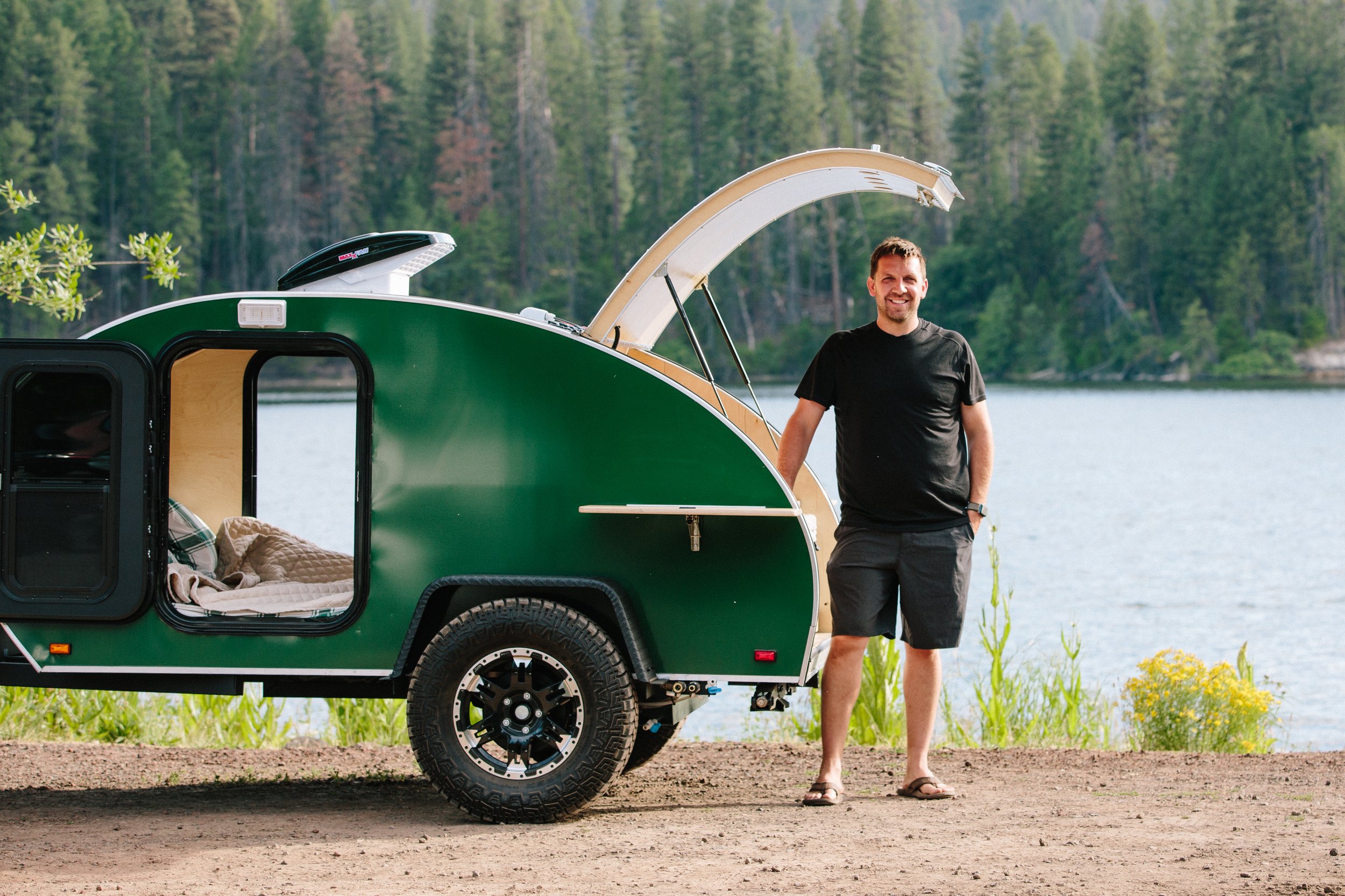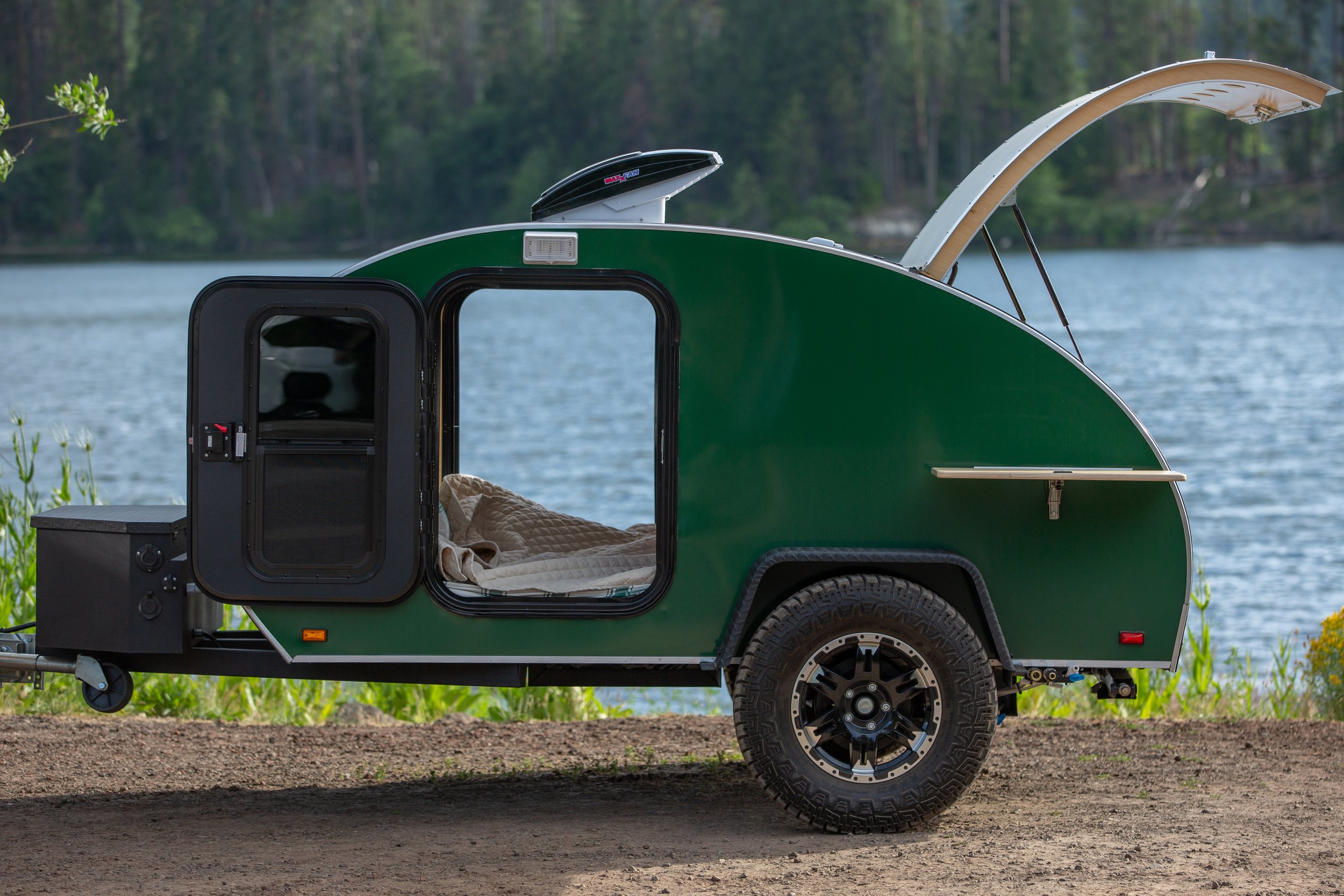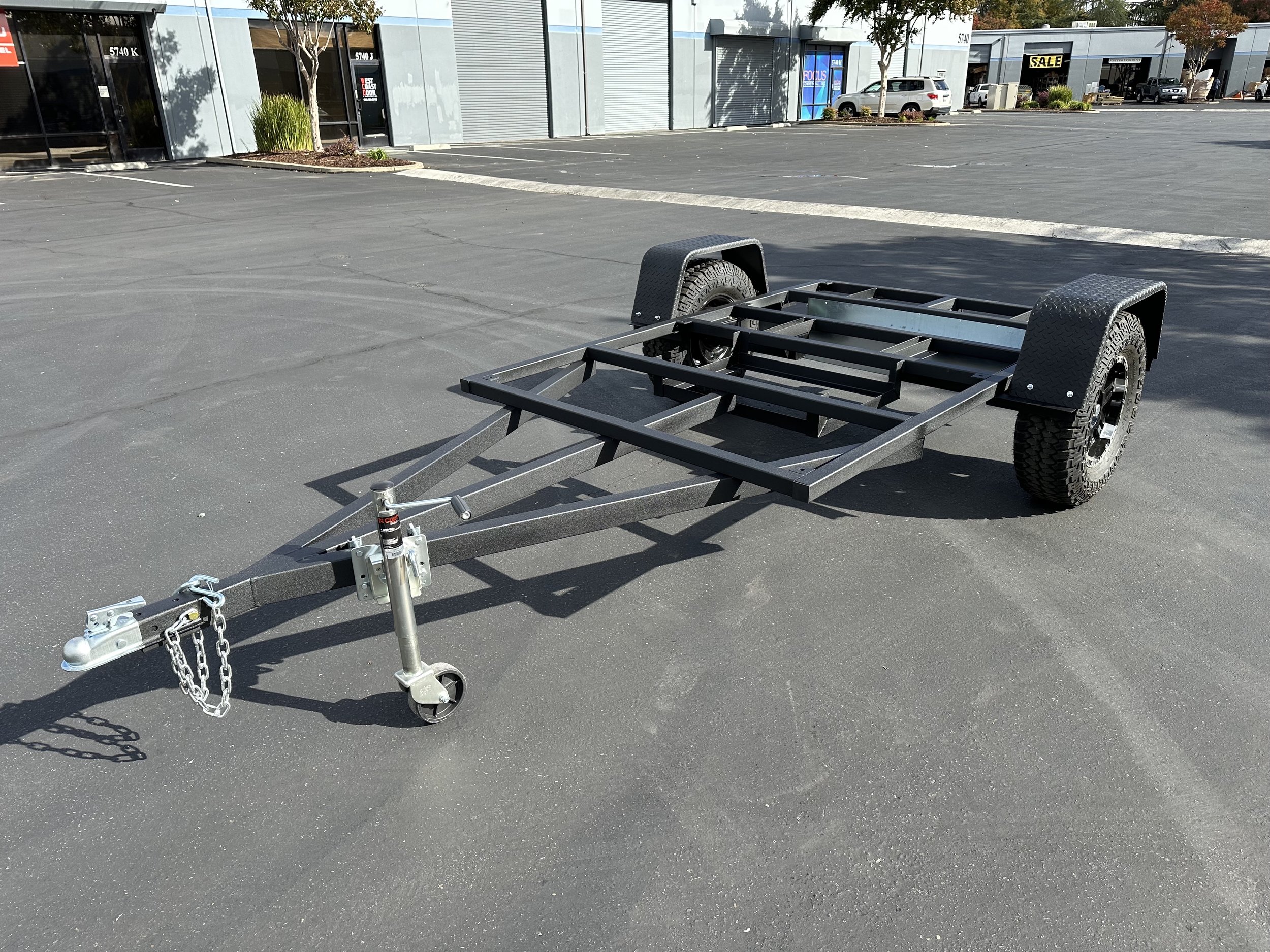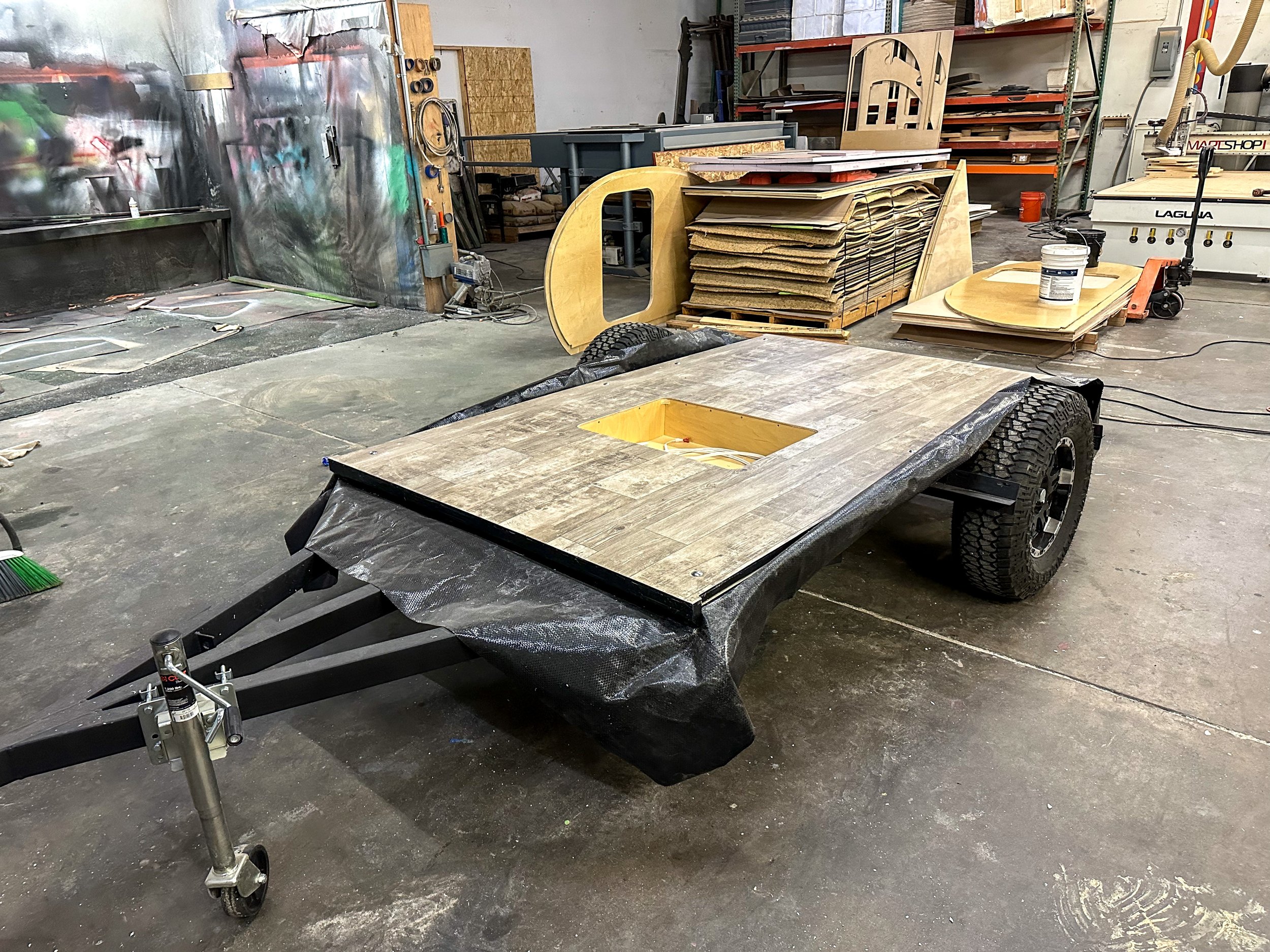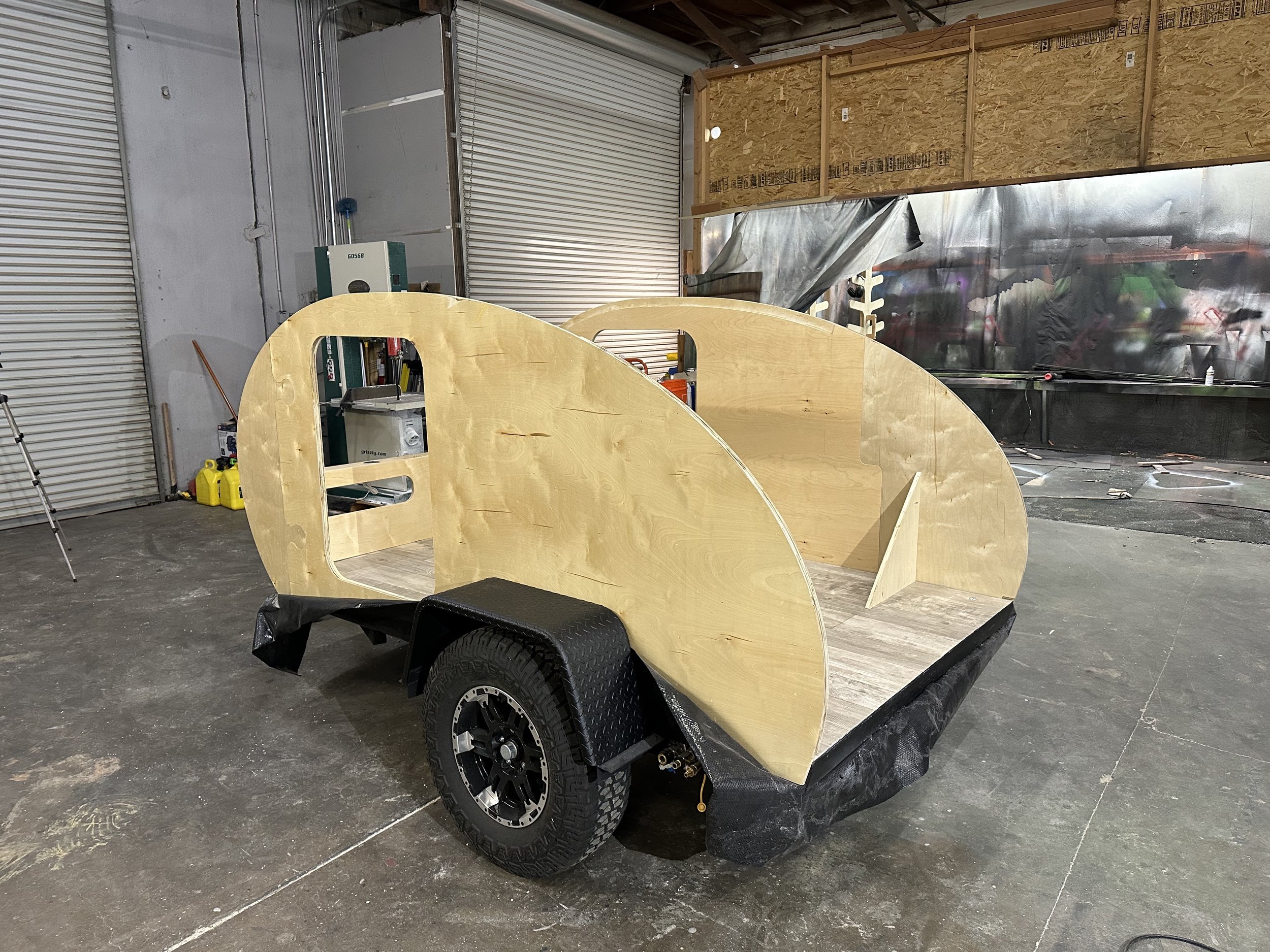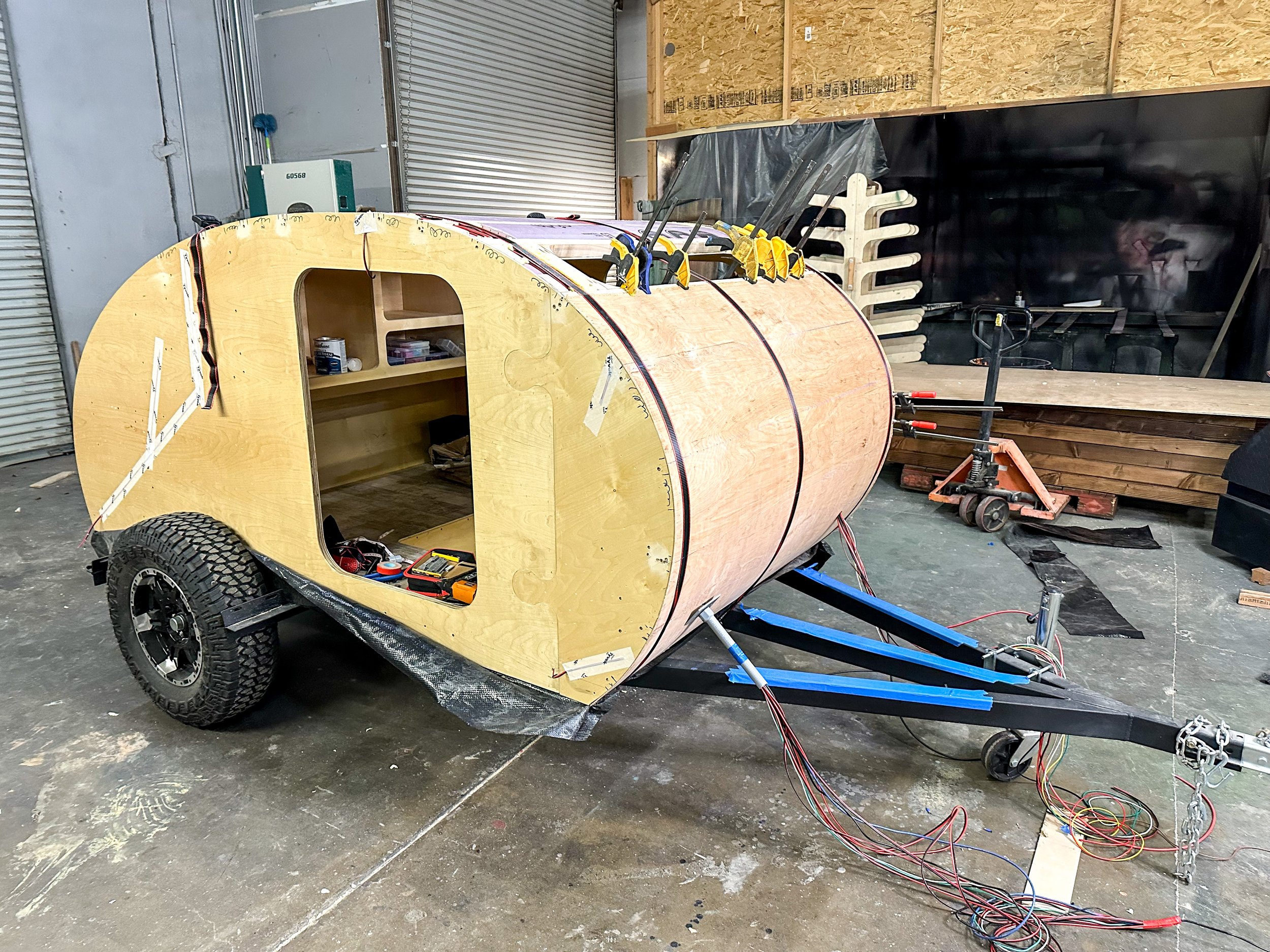DIY Feature - Jon Coyne
As an avid outdoorsman, Jon wanted something he could have ready, hook up to spontaneously, and that would allow him to set up camp quickly when he got to the destination. On one of his trips to Yosemite, he saw someone with a teardrop, and instantly fell in love with the platform.
Jon completed his build in Northern California and used our DIY Vaga plans.
What made you want to build a tiny camper?
I've always been an avid outdoorsman, camping fanatic, and a bit of a gear head with my camping gear. Over the past few years, I grew tired of the time required for a camping trip. From choosing and packing my gear before the trip, setting up camp at my destination, to unpacking, cleaning, and organizing all my gear when I returned home, the time commitment to do all this was making camping difficult enough that trips became infrequent. I decided that I wanted something I could have ready, hook up to spontaneously, and would allow me to set up camp quickly when I got to my destination, but wasn’t as complicated or bulky as an RV or large trailer. I had been exploring options to make camping easier and more comfortable for a long time. I considered rooftop tents, experimented with elaborate hammock setups, various tents, but nothing seemed to fit my needs properly. Then, on one of my trips to Yosemite, I saw someone with a teardrop, and instantly fell in love with the platform. When I got home, I started researching, and came across Wander Tears. Shortly after, for my birthday last summer, I rented a teardrop from a local company and took it up to Fort Bragg on the Northern California Coast. I wanted to see if a teardrop was as cool in practice as it looked online. I was hooked. I realized that this was the solution to what I had been looking for in the search for my ultimate camping rig. As I examined the teardrop I rented, I realized that I had the skills and tools to build one of these myself. The plans I had seen from Wander Tears looked like the most thoughtful and extensive plans out there, as well as, in my opinion, the best looking design. All that considered, I jumped in with both feet.
What was your experience level with the skills required to build a camper (wood working, electrical, metal work, etc.) when you started?
My day job is mostly in and around a shop where we make custom one off projects for people, so I knew I had plenty of experience with woodworking and low voltage systems to be dangerous, as the saying goes. I knew enough to know that with the guidance from the plans, I could figure out what I needed to in order to complete this build to the quality I wanted. I didn’t have any experience with metal work or welding, so I worked with a local shop to fabricate a trailer frame for me according to the plans that Wander Tears provides. That process was seamless and easy, as the plans provided the fabricator with all the detail he needed to build the trailer frame to spec. I’d encourage others to not be intimidated by this build. While I had a fair amount of wood working experience, it was by no means a prerequisite for this build. Wander Tears truly has done a phenomenal job with their plans to make the project doable for virtually any skill level and the private Facebook group for people that have purchased these plans is a great resource to get questions answered from others that have built before you.
What was the first step in your build?
My first step in the build was read through the plans several times, then start to plan out the features I wanted to include or add to my trailer. The beauty of this being a DIY project is that one has the freedom to customize it for their needs. I did a fair amount of research in the private Facebook group, YouTube videos about teardrops, and lots of other places to figure out exactly what I wanted to build into my own trailer, based on what others have done. The first thing I started to build for my trailer was the electrical system in the tongue box, which I did while I was waiting for fabricator to make my trailer frame.
What was your favorite part of the build?
I can’t pick just one favorite part of the build. I’ve truly loved each step of this process. People ask me about the project all the time, and I tell them “I love it! It’s like an adult version of wood shop from your high school days!” (It probably goes without saying that wood shop was my favorite part of my time in high school.)
What was the most difficult part of the build?
The most difficult part of the build was due to my own mistake when I forgot to pay attention to where my wiring was run while attaching the plywood for the external roof. (Even though the plans warn you to take note of where the wiring is run). I only realized my mistake once I completely finished the step. To my horror, I had fired staples all throughout where I had run my electrical work. After a panicked phone call with Danny and Paige, they reassured me that I wasn’t the first person that had made this mistake. It could be fixed, but was just going to take some tedious work to do so. I ended up having to go back and completely rip off all the plywood roof, chisel the construction adhesive off around the staples, remove the staples one by one, plane off all the remaining construction adhesive, rewire the entire trailer, and put new plywood back on. That was a painful oversight that set me back a few weeks. I learned to slow down and read the instructions a few times before these major steps.
How long did it take you?
I had a few other personal projects going on, so I worked in sprints, separated by several weeks in between. All in all, it took me about 8 months to complete.
If you're comfortable sharing, what was the total cost of the build?
I sprang for a few extra options on my trailer frame- off road tires, independent torsion suspension, electronic brakes, and a 21 gallon water tank, which made the build a bit more expensive than what someone would expect when strictly following the plans. All in, I'll probably be close to $14,500.
Would you do anything differently?
I'd simplify. I probably over built this trailer with a couple things like the water tank, water pump, and all the plumbing I had to do to adapt a water system for this platform. In reality, water jugs (as the plans suggest) and a removable 12v pump would work just fine, if not better on a teardrop like this. In the end, sImple is better. The things that I over-complicated this build with were additions I made above and beyond what the plans suggested. This brings me to another point- follow the plans. If something is in the plans, it's likely in there because Danny and Paige learned the hard way. If you stray from the plans too much, you’ll probably learn a few things the hard way like I did too. Learn from their mistakes before you make them yourselves - follow the plans, you’ll be just fine.
What are you most looking forward to?
I’m most looking forward to experiencing my favorite camping spots (like Yosemite and the California coast) in new and more comfortable ways in a teardrop that I’ll be proud to say I built, not bought. I also can’t wait to explore all the new places that this teardrop will allow me to experience.
Any tips for someone that wants to build a tiny camper but doesn’t know where to start?
Jump In! Get the plans, start reading, and make your own plan of action for starting. Don’t fall victim to paralysis by analysis. You can spend weeks pacing around the garage trying to puzzle out every little detail, but the reality is that you just need to start. Follow the plans, and solve those puzzles as you go. Momentum is everything. Try to make progress on something every day. Plan ahead as you go so that you can order materials for the next step and have them ready- order plywood while you are completing your frame- and order doors, windows, and aluminum before you need it because that will take a little time too.
How did using Wander Tears DIY plans and having the resources provided affect your build process and time?
I'm a pretty handy guy, but I don't know how I would have ever built this had I not had the plans from Wander Tears. They turned what would have been months, maybe years of planning into mere weeks, and walked me through every step of the build process; down to every cut I needed to make, and screw I needed to place so that I could work with confidence.
““The first step in crafting the life you want is to get rid of everything you don’t.””
Looking to build a DIY Teardrop Trailer of your own? Check out our detailed DIY plans to get started now and adventuring sooner!





